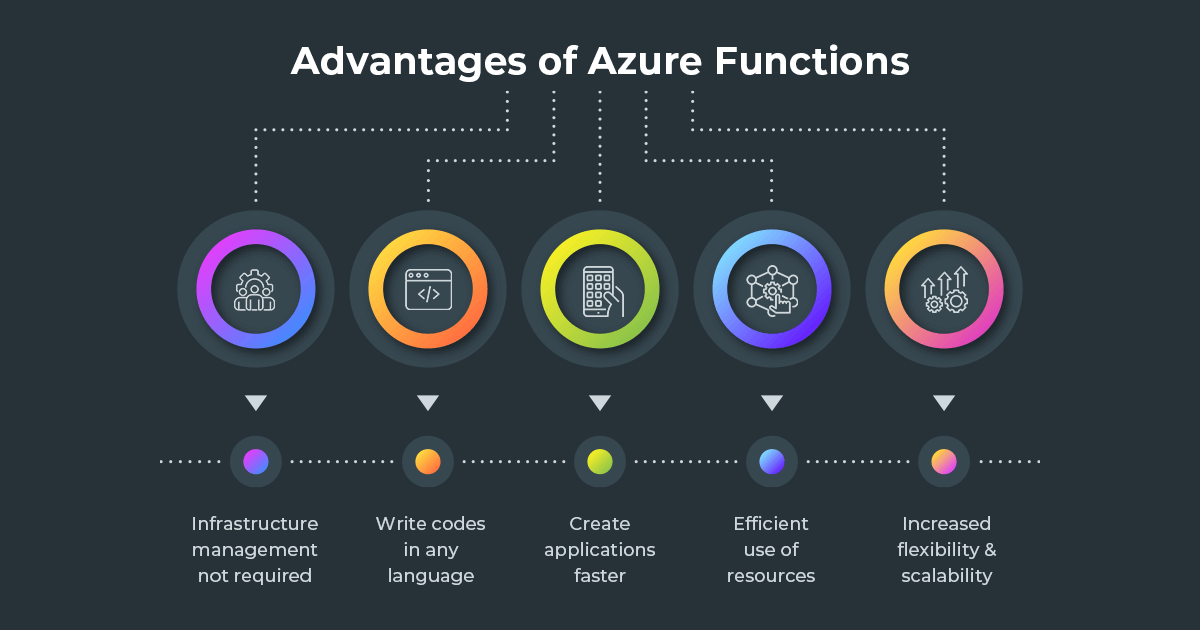According to MarketWatch, the serverless architecture market size is expected to touch $4177.9 million by 2026 from $3570 million in 2020, recording a CAGR of 16.2%.
Serverless applications rely on server hardware and server process that run somewhere else and is managed by third-party vendors. Serverless means that businesses do not have to focus on server hardware and server-side code to run their operations. It supports multiple languages and abstracts the underlying infrastructure from the developer so that they can focus on building the business logic and rich user experience.
Server-less architecture is third-party services known as Backend as a Service (BaaS) or Mobile Backend as a Service (MBaaS) or custom code run-in ephemeral containers. Server resources are then charged for the time they are being used. In serverless architecture, applications are broken into small specific core components with APIs used for interacting with the database and servers.
In the cloud and with a third-party BaaS provider there are a lot of connectors and predefined functions. The developer writes functions that trigger in response to an event when necessary. Examples of such events are:
HTTP/HTTPS Request
Message Queue Trigger
File/Storage Trigger
Timer/Schedule
While serverless development has been around since the release of AWS Lambda in 2014, the last few years have seen an explosive demand in these services.

Why Azure?
Azure serverless computing offers to create endless intelligent and smart applications, allowing users to avail multiple functionalities from various sources. It comes up with built-in intelligence to enable users’ code with machine learning and cognitive services and provides local debugging in visual studio, visual debug history, deployment, etc. The Azure architecture allows users to go to their browser and access the application and sign in. Then the browser starts pulling the static resources like images from Azure CDN (Content Delivery Network) and allows users to make search queries using SQL. The website then pulls the product catalog from the database and product images from blob storage.
To provide better output, the Azure cache for Redis caches the page output. The Azure function (discussed a little later) makes payments to the third party and stores the record in the SQL database. Users submit their orders and the order is placed in a queue till the Azure function processes the payment.
Server-less Computing and its Performance in Microsoft Azure
Developers can use Azure Cosmos DB for storing the data of serverless applications. This replicates the data across regions and provides the best services to all users of the application.
Microsoft Azure provides top-notch security to developers and the Azure Active Directory helps developers to access resources securely and manage applications.
Microsoft Azure provides scalable cloud storage for developers and facilitates messaging.
It provides API management and developer tools and services.
Azure provides app development tools to build, run as well as debug serverless applications.
It provides CI/CD for serverless and numerous cloud-hosted private Git repositories and adds package management along with other functionalities.
Serverless Workflow Orchestration helps to integrate data and applications. Once can design serverless workflows with the help of Azure Logic Apps.
The Serverless Messaging feature simplifies event-based application scenarios with Azure Event Grid.
Azure Serverless API Management can publish, transform, secure, and monitor APIs and serverless Kubernetes provides services for orchestration capabilities and virtual nodes.
It helps to execute the code of any language and these applications can be scaled up or down on demand.
The same applies to scaling any API application of the user’s own choice.
With its serverless database Azure Cosmos DB offers a multi-model databased that is scalable and globally distributed.
Azure Serverless Analytics helps run a large amount of parallel analytics or multiple streams of data. Power BI is an intuitive tool from Microsoft to build powerful reports and dashboards.
Microsoft Azure Serverless Computing delivers a lot of value to businesses by reducing critical time money and resources spent on infrastructural requirements. Gemini Consulting & Services can offer fully managed Azure serverless solutions that can increase the productivity of developers and optimization of resources. Contact us to know how you can unlock maximum value from Azure serverless architecture for your business.
Azure Functions
Azure Functions is a cutting-edge event-based independent code inside the Azure platform that is ready to get executed. It helps users function in the cloud without worrying about the infrastructure or the platform where the function is running. It allows a small code to be written in a supported language (PHP, JavaScript, bash, C#) and runs them. The app can connect to Azure Cosmos DB Storage and external applications like SendGrid, Dropbox, etc. through connectors. The Azure Functions are set off with various triggers such as BLOB being embedded in a compartment or by an HTTP demand. Similarly, external administrators can also trigger the Azure Functions.

Azure Functions support event-based processing and make time-based processing easy. A function can be written to perform a given job at a specific time interval.
Developers can write a function app that detects Azure service events like reading a log file in a storage blog, transforming it into SQL and sending a notification to the user.
It also allows SaaS event processing like saving files to one drive from an email attachment or sending out a mail when a new file is added.
Azure Functions can also power the application backend based on user data and triggered events.
Real-time stream processing with Azure analytics can obtain a message from the Internet of Things (IoT) devices and then process them to create records on SQL Azure tables.
It can be integrated with the Azure bot framework to process a bot behavior using a webhook.
Users are only billed when the Azure function is running, thereby, optimizing costs. Azure Functions mean no other virtual machine is running to handle servers.



